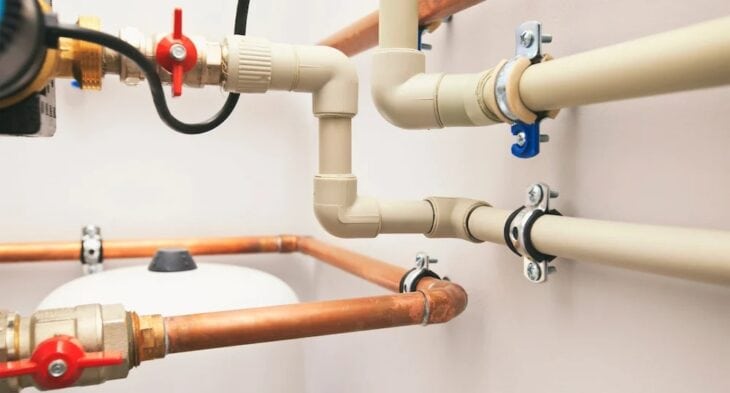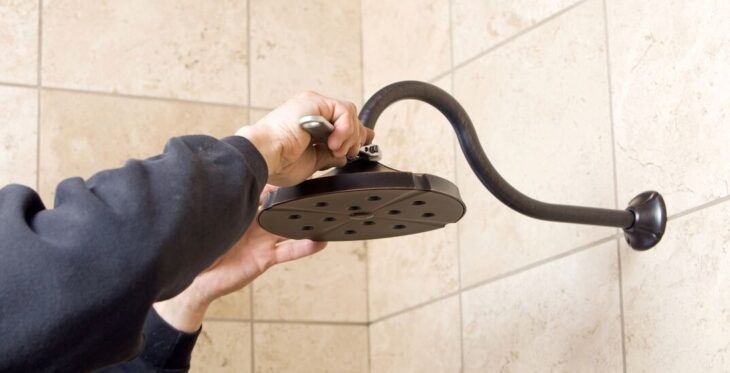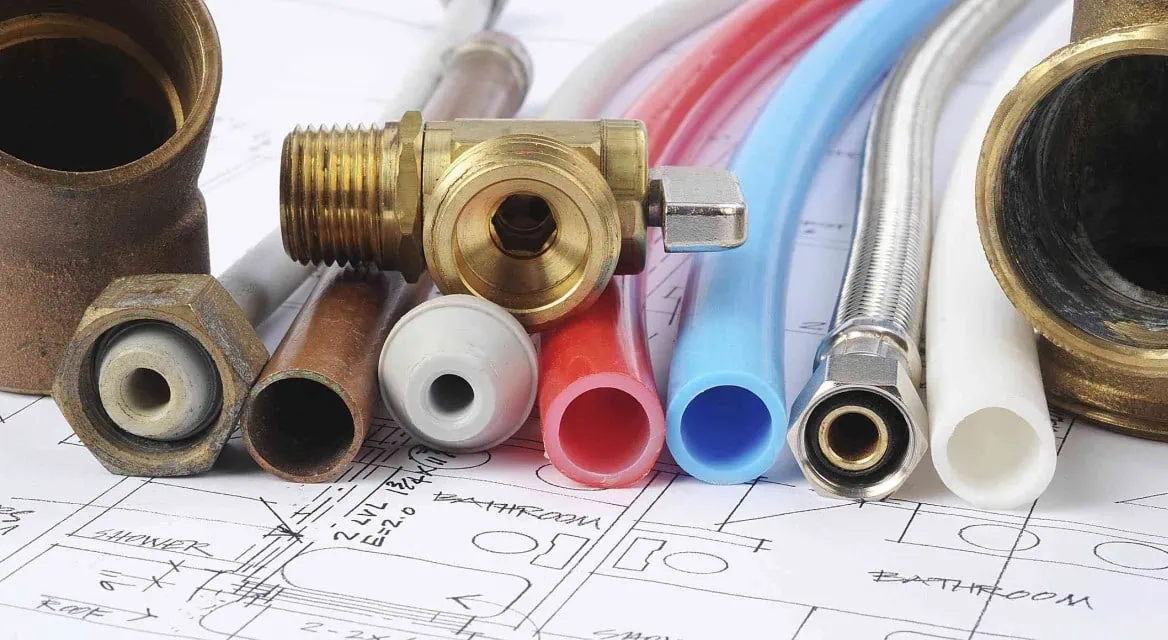If you need to replace the supply line that goes to your shower, you may be wondering what size pipes you will need and if all of the fittings are the same.
Knowing the correct supply pipe and fitting sizes will save you the hassle of having to run back and forth to the store for plumbing supplies.
Table of Contents
Shower Supply Line Sizes – What You Need To Know

Most homes built in the US and Canada follow the same plumbing guidelines which means that your home will likely have one of the following sizes of pipe supplying water to your shower.
The three most common shower supply pipe sizes used in most homes are ⅜ inch, ½ inch, and ¾ inch. The pipes can vary in material but now most people use PEX pipes to run their supply lines.
PEX pipe is flexible and holds up better in extreme temperatures. It is also considerably less expensive than using copper or stainless steel pipes.
If you are experiencing issues with water pressure, you may need to increase the size of the supply pipe; to avoid extra work, check the size of the supply lines before buying any supplies.
Some factors that can affect which size pipe to choose are the distance between the main water supply and the shower lines. More distance means less water pressure.
If you live in a multi-story home, you will have less water pressure on the upper floors. This is why it is common to use ¾” supply lines and then reduce them to ½” at the shower arm.
This allows for more water to be pushed upward to the shower. When it comes to pipe sizes and water pressure, you can expect to have more water pressure with a larger supply pipe.
Standard Shower Head Pipe Sizes
In the US and Canada, a standard shower head supply pipe size is ½”. A figure which has been set by the National Pipe Thread (NPT).
The NPT is the standard that the US and Canada use on brass and stainless steel fittings to connect rigid pipes like a shower head to the shower arm pipe in the wall.
Other types of plumbing fixtures may have different NPT standards, however, for a shower head, you can almost always expect it to be ½”.
Listed below are examples of times when the standard half-inch rule may not apply.
- Some older homes use a shower head with a ball-style shower arm which will not accept newer styles of shower head fittings.
- You have a custom-designed bathroom with unique fixtures.
- You purchased a shower head from another country.
Note that if you find that your home has a ball-style shower arm, it is possible to purchase an adapter online so that new styles of shower heads can be used.
How to Install a New Shower Head

Installing a new shower head in your bathroom should take no more than a few minutes.
Begin by unscrewing the nut that connects the shower arm pipe to the shower head in a counter-clockwise direction.
Most of the time a shower head can be changed without any tools; however, calcium and mineral deposits can build up and make it difficult to unscrew the old head.
If you run into this problem you can simply use a penetrating oil such as PB Blast or WD-40 to help loosen the threads on the pipe. Then use a pair of pliers to break the nut free.
Once you have the old shower head removed, clean the threads of the shower arm pipe to ensure there is no leftover plumbing tape or gunk preventing it from having a good seal.
Next, screw the new shower head onto the shower arm pipe and turn it until it is tight. Turn the water on to be sure it is flowing properly and not leaking at the connection point.
Water Pressure Problems and Solutions

Sometimes upgrading to a new shower head is all you need to get the water flowing at a rate that is acceptable. But other issues can also cause your shower to be more like a trickle.
For starters, it’s helpful to know that most shower heads require at least 40 – 60 PSI of water pressure, so if your home has low water pressure, a new head will probably not fix the issue.
If you are unsure of whether you have low water pressure there is a quick way to test it without a professional.
Place an open container (1L) under the shower faucet. Turn the water on full blast. If the container takes longer than six seconds to fill up then you most likely have low water pressure.
Other things that can give the appearance of low water pressure are a clogged shower head or nozzle due to excess mineral buildup.
A pinched or improperly routed water supply line can also reduce the water pressure by not allowing the water to flow properly.
A shower head with a water restrictor will also make your pressure feel low. This is commonly done in apartment complexes or hotels to save on water consumption.
To remedy these issues you can try some of the following things before calling a professional:
- Remove and soak the head in a cleaning solution to remove mineral deposit buildup
- Check that the valve to the water supply lines is fully open
- Remove the water restrictor
Final Thoughts
Updating your shower supply lines and/or adding a new shower head is a quick and easy task since most water supply pipes and shower head pipes are made to fit together easily
If you need to know the standard measurements for other plumbing fixtures in your home, the NPT has a standardized list of pipe sizes and threads to make any job easier.

